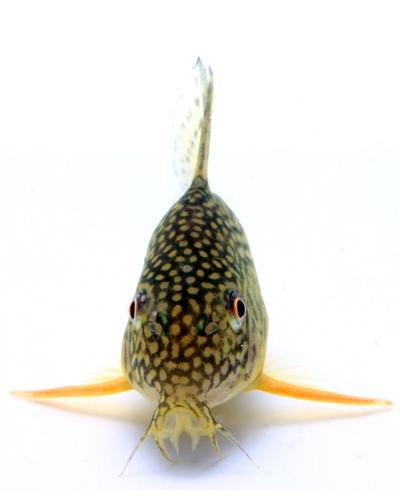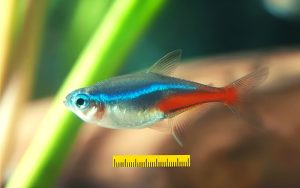You may wonder if you’re considering bringing a few Corydoras into your aquarium. How often do Cory catfish breed, and are there any special steps or tricks to it?
Cory catfish are a popular choice for both the beginner and experienced aquarist, but how often do they breed corydora, and what are the optimum breeding conditions?
Breeding Cory catfish can be a challenge for some aquarists, so we’ve compiled this guide to help you get started.
By following our tips, you’ll be well on your way to establishing a thriving breeding colony of these popular egg-laying fish.
This Cory catfish expert guide will tell you all the basics of Cory Catfish breeding, from ideal water conditions for optimal spawning to tips that make eggs more likely to hatch successfully.

We’ll also give some pointers on where to find out more detailed information so beginner aquarists can have their own Cory breeding fish successes in no time!
Table of Contents
ToggleHow Often Do Cory Catfish Breed?
How Often Do Cories Lay Eggs? If conditions are right, Cory catfish lay eggs every 1 to 4 weeks. The female will lay 30-100 eggs at a time, and the male cory catfish will then be fertile eggs.
For successful spawning, it is essential to set up the proper conditions for your Corys.
These adult fish require soft, acidic water with a pH of 6.0-7.0, a temperature range between 70-78 degrees, and low to moderate water flow.
Aquarists with higher levels of experience often use peat moss to soften and slightly acidify the water to encourage laying eggs.
It’s also vital that Corys have plenty of hiding places and a well-maintained aquarium with plenty of live plants.
What is the Ideal Water Temperature for Corydoras?
Corydoras is a widespread genus of tropical freshwater fish. Regarding water temperature, Corydoras need temperatures between 72 and 82°F (22 – 28°C) to thrive.
This is considered the ideal water temperature for these fish as it provides them with an environment and the right tank size, “20 gallons,” to support their health and activity levels adequately.
Beyond the ideal temperature range mentioned above, there may be some flexibility depending on the species of Corydoras in your aquarium.
Some species may tolerate cooler or warmer temperatures for short periods, but for the best long-term health and general happiness, sticking to the recommended range of 72-82°F is always your safest bet.
In addition to setting up a reliable heater in your fish tank that can maintain this temperature range reliably and accurately (and replacing them every few years if necessary),
you’ll also want to ensure that you’re regulating any sudden changes in your aquarium’s environment.
Sudden spikes or drops in water temperature can cause significant stress on Corydoras, which could lead to disease or even death, so keeping a close watch over all environmental variables will help keep them healthy!
How to Tell If Cory Catfish Are Breeding?
How do I know if my Cory catfish are breeding? Cory catfish are some of the most popular aquarium fish and are often seen in pairs. Breeding Cory cats is relatively simple, although it is necessary to observe your bottom feeders to determine whether or not they are breeding.
The process of mating in Cory catfish relies on a behavior called “T-pose.” When two mature Corys mate, the male will approach the female and press his body against hers with his head above hers.
Both will arch their bodies, forming an upside-down T shape together. The male then releases sperm which causes fertilization.
This behavior can be seen as early as one month after hatching and may continue until several months later, depending on when the eggs hatch out of the female’s ventral (belly) fin area.
If you witness this behavior repeatedly repeated over weeks or days, that’s a good sign that your corys are breeding!
In addition to watching for T-shape mating behaviors, there are other signs you might see that indicate breeding activity has occurred in your fish tank:
- Look for clutch sizes of 20-50 small white/pink eggs around live plants where females lay them during spawning; look for fry swimming around after about three days once eggs have hatched.
- Look for males guarding their hatch containing newly deposited eggs; notice if both sexes become more active and territorially aggressive before or during spawning season;
- Watch for changes in diet preferences such as increased appetite due to sudden needs to consume nutrition while producing new offspring (they could eat almost any food, but smaller ones like baby brine shrimp, “newly hatched brine shrimp,” and flake pieces are preferred).
Overall, keeping an eye on your cory cats will help you identify whether or not they’re trying to mate–the telltale signs should be easy enough to spot!
How Many Eggs Do Cory Catfish Lay?
How many babies do corydoras have? Cory catfish, also known as Corydoras, is a prevalent and attractive schooling fish commonly seen in home aquariums.
The number of eggs that Cory catfish lay will vary according to the species and individual fish, but it’s typically between 20 and 50 per spawn.
A female cory catfish typically lays eggs on plants or other aquarium decorations, which helps protect them until the fry hatch. Depending on the species and water temperature, the eggs will hatch in 3-10 days.
How Do Cory Catfish Eggs Get Fertilized?
Cory catfish eggs are fertilized externally, meaning that the male fish will release sperm externally and which will then fertilize the female’s eggs.
The process is known as “broadcast spawning,” and it’s one of the most common methods used among male and female cory catfish.
During the mating process, the male and female corydoras will arch their bodies together in what is known as a “T-pose.” At this point, the male cory catfish will release the sperm, fertilizing the eggs.
What Do Fertilized Cory Catfish Eggs Look Like?
Corydoras eggs present a unique appearance, with an unmistakable white hue and eggshell details that can be seen. These tiny gems measure 1-2mm in size and are typically laid in small clusters of 10-20.
Within one to two days after fertilization, the blues become more brownish-orange hues interspersed by black spots – delivering even more visual interest!
How Long Do Cory Catfish Eggs Take to Hatch?
Cory catfish eggs typically take between 3-10 days to hatch, depending on the species, water temperature, and other environmental factors.
Once the eggs have hatched, the fry will emerge and quickly scurry away in search of food. At this stage, they are very vulnerable to predation, so ensuring that their environment is safe and conducive to their survival is essential.
What to Do When Cory Eggs Hatch?
After an exciting hatch, it’s time for the fry to absorb its egg contents. No other food is necessary for up to two days as they get used to their new environment – but you can still take a break!
Make sure you switch out 90% of the water in your container with fresh tank water from where they hatched – helping the newly hatched cory catfish acclimate and ensuring vital nutrients are needed in those first few days.
Do Cory Catfish Lay Unfertilized Eggs?
Yes, Female Cory catfish can lay unfertilized eggs. This is common in aquariums with older female fish and with a lack of males.
Cory catfish eggs are typically smaller than regular fertilized eggs, have no black spots, and will not hatch.
Female Cory catfish can occasionally lay unfertilized eggs, even in the absence of males.
This phenomenon is believed to be triggered either by stress or instinctive behavior. It results in an all-female breeding tank population unable to produce new offspring.
Do Cory Catfish Eat Their Babies?
Do Cory Catfish eat their babies? The short answer is yes; they can.
Cory Catfish, also known as Corydoras catfish, is a small freshwater fish native to South America.
They are known for their peaceful nature and make great additions to community aquariums.
However, what many people don’t know about this cory catfish species is that not only do they have the potential to eat their eggs but, in some cases, even their wrigglers (Corydoras larvae).
It’s important to note that Cory cats aren’t strictly predatory when consuming their young cory catfish—it largely depends on the fish’s environment and how much food is available at any given moment.
When faced with unpredictable circumstances like overcrowding or lack of food sources besides eggs or wrigglers, these friendly fish may become desperate predators to survive.
Of course, while this behavior may seem repulsive and counterintuitive from our human perspective, it’s important to remember that these fish were created by evolution over thousands of years—and like all animals, they must adapt to survive adverse conditions.
So while eating your offspring isn’t something we humans can relate too easily with (at least I hope not!),
it’s not necessarily something you should take personally if you happen to see it occur among your cory cat inhabitants!
How Long Are Cory Catfish Pregnant?
After Cory Catfish eggs fertilize, they take 3-6 days to hatch. To protect the corydoras eggs from hungry adults in the tank, it’s wise to transfer them out before hatching.
However, if little swimmers don’t appear after a week has passed, this may indicate that something has gone awry with their development!
Are Corydoras Easy to Breed?
Corydoras are relatively easy to breed and make an excellent choice for the hobbyist looking to get into the fish-breeding game.
These catfish are not picky eaters and usually accept a variety of food, making it relatively easy to provide them with necessary nutrients.
They also require minimal space and can be housed in smaller tanks or aquariums.
In addition, Corydoras spawn quickly and can lay hundreds of eggs in one go—making it easier to manage the breeding process and ensure that a healthy number of cory catfish fry make it to adulthood.
These fish are hardy and usually reproduce successfully, given proper care and the right environment.
With enough attention, patience, and the right conditions, you should be able to propagate your colony of Corydoras!
Will Cory Catfish Breed in a Community Tank?
Though adult Cory Catfish will breed in a community tank, it’s generally not recommended.
To ensure the highest chance of success, moving them into a separate breeding tank once mating has occurred is best.
In a community fish tank, the eggs may become food for other fish, or you may find yourself with an overpopulation of babies!
Additionally, Cory Catfish require a specific temperature and pH range to produce healthy offspring, which is often challenging to manage in a larger fish tank with other fish species present.
It’s also important to note that the presence of other fish can be disruptive to mating behavior, so isolating the breeding pair may help improve their chances of successful reproduction.
How to Breed and Raise Cory Catfish?
Cory Catfish is an excellent choice for a community fish tank, but breeding them can be difficult.
Many people give up breeding Cory Catfish because getting them to spawn in captivity can be challenging.
This video offers tips on breeding and raising cory catfish in a community fish tank environment. You will learn about the different types of eggs they lay and the best way to care for cory catfish fry.
Conclusion
So, How often do Cory catfish breed? Cory catfish are a great addition to any freshwater tank, as they help keep the water clean and are fun to watch. They breed frequently, so you may have more corys than you started! You can always give them away to a friend or pet store if this happens. Thanks for reading, and we hope this article was helpful.
You might also like
- Do Cory Catfish Eat Snails? Is it Even Possible (Yes, or No)
- L200 Phantom Green Pleco: A Complete Guide (For Beginners)
- Raphael Spotted Catfish: Diet, Tank Mates, Diseases & (More)
- Tiger Shovelnose Catfish: #1 Care Guide (You’ll Ever Need)
- What Do Cory Catfish Eat? Corydoras Food (Checklist)





